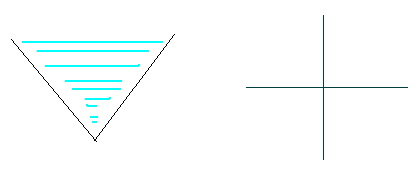POJ 2826 An Easy Problem?!(計算幾何)
Description:
It’s raining outside. Farmer Johnson’s bull Ben wants some rain to water his flowers. Ben nails two wooden boards on the wall of his barn. Shown in the pictures below, the two boards on the wall just look like two segments on the plane, as they have the same width.
 Your mission is to calculate how much rain these two boards can collect.
Your mission is to calculate how much rain these two boards can collect.
Input:
The first line contains the number of test cases. Each test case consists of 8 integers not exceeding 10,000 by absolute value, x1, y1, x2, y2, x3, y3, x4, y4. (x1, y1), (x2, y2) are the endpoints of one board, and (x3, y3), (x4, y4) are the endpoints of the other one.
Output:
For each test case output a single line containing a real number with precision up to two decimal places - the amount of rain collected.
Sample Input:
2 0 1 1 0 1 0 2 1
0 1 2 1 1 0 1 2
Sample Output:
1.00 0.00
題目連結
給出兩條線段,求兩條線段能接到多少從豎直上方落下的雨水(求面積)。
兩條線段的位置可以分為幾種情況:
- 兩條線段不相交
- 至少一條線段與x軸平行
- 線段相交但交點上方線段兩端點其y值較小點被另一線段遮擋
- 線段相交
其中前三種情況是接不到雨水的。
PS:此題要交C++,G++我一直WA。
AC程式碼:
#include <iostream>
#include <cstdio>
#include <cmath>
using namespace 